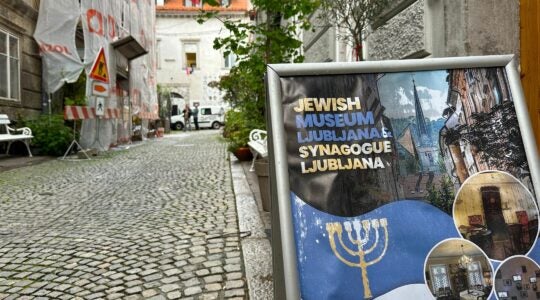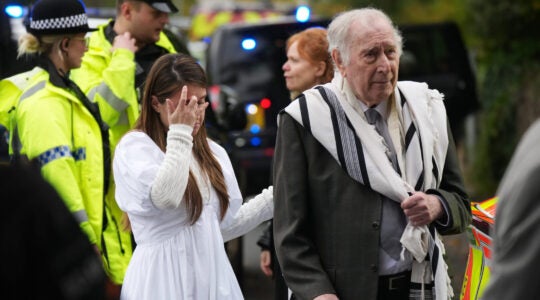 The western entrance to Kiryat Yearim — better known to English speakers as Telz Stone — is reached through a break in a solid wall of Jerusalem stone just off the Jerusalem-Tel Aviv highway. Inside, this ultra-Orthodox enclave on the outskirts of the capital is a veritable concrete jungle of houses and apartment blocks built seeming on top of one another on the hillside.
The western entrance to Kiryat Yearim — better known to English speakers as Telz Stone — is reached through a break in a solid wall of Jerusalem stone just off the Jerusalem-Tel Aviv highway. Inside, this ultra-Orthodox enclave on the outskirts of the capital is a veritable concrete jungle of houses and apartment blocks built seeming on top of one another on the hillside.
Like other Orthodox neighborhoods in Jerusalem and its environs, the place feels cramped and devoid of open, green spaces (though there is plenty of it on the surrounding hillsides). In other words, it’s not the kind of place where one expects a chapter of Israel’s eco-revolution is being written.
But inside an unobtrusive gate on Gordon Street, I found Talia Schneider hard at work in her garden. Schneider is one of Israel’s foremost experts on permaculture, an approach to food production and sustainable living developed in Australia in the 1970s. She is the first Israeli permaculture teacher, the author of the only Hebrew-language guide to its principles, and the translator of several of its key English texts. She estimates that over the years, she has taught permaculture to 1,000 students.
But as a long-skirt-wearing, head-covering religious woman, Schneider may yet represent something even more significant — a bridge between two worlds, the religious and the environmentally conscious, that rarely overlap. Schneider refers to them as the greens and the blacks.

"Here in israel there is a very strong separation between two parties," Schneider told me. "One is the green, and the other is the black. Just in case, I happen to be both of them."
Schneider showed me the elaborate permaculture systems she has installed in the modest strip of land that surrounds her home. There are systems to collect rainwater and household greywater, systems to process human waste into rich fertilizer, and systems to use chickens to aerate and fertilize the soil while producing eggs and meat for Schneider, her husband, and their three children. And Schneider claims she keeps the whole thing going with just 30 minutes of work a day.
Schneider was raised in a secular family and discovered both permaculture and religion as an adult. And while for her, the two go perfectly well together, she’s not blind to the fact that for many in her community, that’s hardly the case — a fact she attributes in part to the 2,000-year separation between the Jewish people and their land.
"We have a very important and urgent work to overcome this 2,000 years of lacking soil," Schneider said. "But we that were born here, and we are so connecteed to the soil and the local … We have to bring things together. This is permaculture."
After meeting Schneider, I visited Hava & Adam, an eco-farm located near Modi’in where many of the systems evident in Schneider’s backyard were applied on a larger scale. I’ll have video of the farm in the next few days.
JTA has documented Jewish history in real-time for over a century. Keep our journalism strong by joining us in supporting independent, award-winning reporting.





